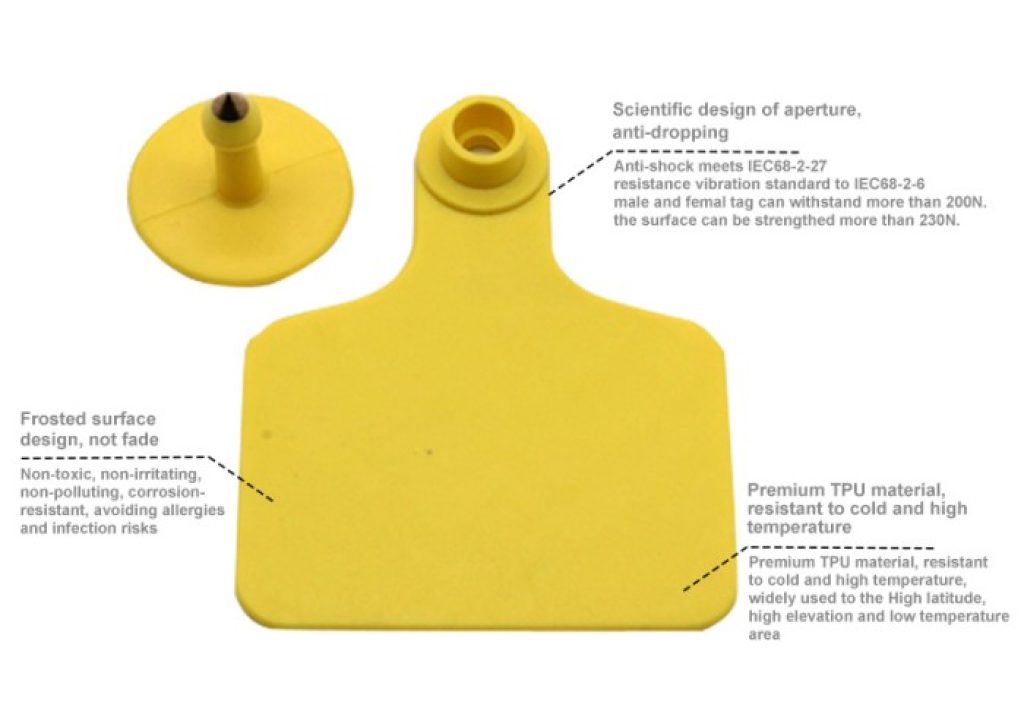Why Use RFID Tags for Cattle: A Game-Changer in Livestock Management
In the vast landscape of livestock management, the introduction of Radio-Frequency Identification (RFID) technology has been nothing short of a game-changer. Specifically designed RFID tags for cattle , RFID tags have brought about a transformation in the way ranchers and farmers monitor, track, and care for their herds. In this comprehensive article, we’ll explore the myriad benefits of using RFID tags for cattle and how they have revolutionized the industry.

Understanding RFID Technology
Before delving into the advantages, let’s start by comprehending the basics of RFID technology.
1. What is RFID Technology?
RFID stands for Radio-Frequency Identification. It’s a wireless communication technology that uses electromagnetic fields to automatically identify and track tags attached to objects, in this case, cattle.
2. How Does RFID Work?
RFID systems consist of three main components: RFID tags, RFID readers, and a centralized database. The tags, attached to cattle, contain electronic information. When a reader sends out a signal, it activates the tag, and the information is transmitted to the database, allowing for real-time tracking and monitoring.
The Advantages of RFID Tags for Cattle
Now, let’s delve into the numerous benefits of using RFID tags in cattle management.
1. Improved Identification and Traceability
RFID tags for cattle provide a unique identification for each animal in the herd. This identification is linked to a centralized database containing essential information such as age, breed, medical history, and ownership. This means that individual cattle can be easily identified and traced, a task that was once cumbersome and time-consuming.
2. Efficient Record-Keeping
Gone are the days of manual record-keeping. RFID technology automates the process of recording and accessing data. Rather than jotting down information on each animal, ranchers can scan the RFID tag to access comprehensive records. This not only saves time but also reduces the margin for human error.
3. Disease Management
Disease outbreaks can be devastating for cattle herds. RFID tags for cattle are instrumental in monitoring the health of individual animals. Any unusual behavior or signs of illness can be detected early, allowing for swift isolation and treatment. This proactive approach helps prevent the spread of diseases within the herd.
4. Enhanced Breeding Programs
RFID tags allow for precise tracking of an animal’s health and behavior patterns. This information is invaluable when it comes to breeding programs. It enables ranchers to identify optimal breeding times, leading to higher reproduction rates and ultimately, increased herd size.
5. Automation of Feeding and Care
RFID technology enables the automation of feeding and care processes. Sensors at feeding stations can monitor each animal’s dietary needs, ensuring they receive the right amount of food. This not only improves the health of the cattle but also reduces the labor required for manual feeding.
6. Movement Tracking
RFID tags help monitor the movement of cattle within the herd. This data can provide insights into activity levels, which are particularly useful in detecting heat cycles, gestation, and overall well-being.
The Environmental and Economic Impact
RFID tags for cattle extend their benefits to environmental and economic aspects as well.
1. Sustainable Farming
By ensuring the health and well-being of cattle, RFID technology contributes to sustainable farming practices. Healthy cattle are more efficient in converting feed to meat or milk, reducing waste and enhancing the environmental footprint of the livestock industry.
2. Improved Product Quality
Healthy and well-fed cattle result in higher-quality meat and dairy products. RFID tags help ensure that the industry’s products meet industry standards and regulations, leading to safe and high-quality products for consumers.
The Future of RFID Tags for Cattle
The adoption of RFID technology for cattle management continues to grow, and its potential is far from exhausted.
1. Global Standards and Regulations
As RFID technology becomes more integral to cattle management, it is likely that global standards and regulations will emerge to ensure uniformity and data security. This will facilitate international trade in livestock and livestock products while maintaining data privacy and security.
Conclusion
In conclusion, RFID ear tags have already revolutionized livestock management, but their journey is far from over. The future holds exciting possibilities for this technology, promising enhanced data analytics, improved animal welfare, sustainable farming practices, blockchain integration, customization, IoT integration, and the establishment of global standards. As RFID technology continues to evolve, so too will the efficiency, productivity, and sustainability of the livestock industry.
FAQs
1. Are RFID tags safe for cattle?
RFID tags are safe for cattle and have been used extensively in the industry. The tags are designed to be comfortable and cause no harm to the animals.
2. How long do RFID tags last on cattle?
RFID tags are durable and typically last the lifetime of the animal. They are designed to withstand harsh environmental conditions.
3. Can RFID tags be used for other types of livestock?
Yes, RFID technology can be applied to various types of livestock, including sheep, pigs, and poultry, for similar benefits in management and monitoring.
4. What is the cost of implementing RFID tags for cattle?
The cost can vary depending on the scale of the operation, but RFID tags are considered a cost-effective investment due to their numerous benefits.
5. Are there privacy concerns with RFID technology in cattle management?
RFID technology in cattle management prioritizes data privacy and security. Measures are in place to ensure the safe and confidential handling of information.
















